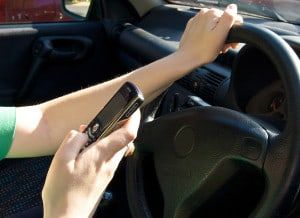 In 2012, Distraction.gov partnered with Glee to raise awareness about texting and driving. In a powerful episode, Dianna Agron’s character, Quinn Fabray, is hit by another vehicle while driving through an intersection. The teen failed to stop for the oncoming truck because she was distracted by text messaging. Though she was able to walk again, the accident left Quinn temporarily paralyzed from the waist down.
In 2012, Distraction.gov partnered with Glee to raise awareness about texting and driving. In a powerful episode, Dianna Agron’s character, Quinn Fabray, is hit by another vehicle while driving through an intersection. The teen failed to stop for the oncoming truck because she was distracted by text messaging. Though she was able to walk again, the accident left Quinn temporarily paralyzed from the waist down.
Distraction.gov chose Glee as an outlet for conveying the dangers of texting while driving because of the show’s popularity among teens and young adults, the age group in which distracted driving is most common. With U.S. teens sending and receiving an average of 6 texts every hour, it’s safe to say that texting is often involved.
In AT&T’s recent Teen Driver Survey, 43 percent of the 1,200 teens surveyed admitted to texting while driving, despite 97 percent of participants acknowledging that the act is dangerous. But teens aren’t the only ones texting while driving. In the same survey, almost half of participants reported that their parents text while driving.
Texting is considered the most dangerous distraction because it diverts the driver’s visual, manual, and cognitive attention away from the road. According to a report from the Virginia Tech Transportation Institute, texting keeps driver’s eyes off the road for 4.6 seconds, which is like driving the length of a football field at 55 miles per hour without ever looking at the road. With that amount of eyes-off-the-road time, a texting driver is 23 times more likely to get into an accident than a non-distracted driver.
Currently, texting while driving is illegal in 39 states while any use of handheld cell phones while driving is prohibited in 10 states. Unfortunately, these laws don’t stop drivers from texting or using their cell phone while driving. According to the National Safety Council (NSC), at least 100,000 crashes each year involve a texting driver.
In honor of Distracted Driving Awareness Month, take NSC’s pledge to drive cell free.
